Backyard Bugs - Grasshopper
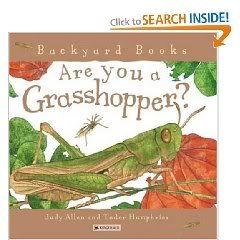
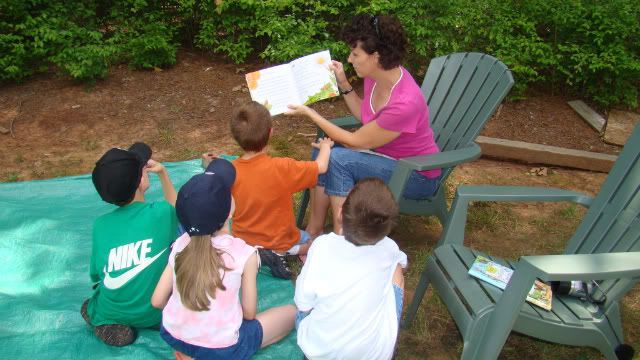
We also looked at the two-page spread from Bugs and Spiders. This is a great book with photos and information on various insects (and spiders) including life cycle, size, basic info and anatomy.
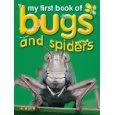
Next we shared some information with the children on grasshoppers. When we were able to insert a fun activity to go along with the fact - we did that. Did you know that there are more than 18,000 kinds of grasshoppers and they are found all over the world with the exception of the colder areas near the North and South Pole.
We also talked about the differences between grasshoppers and crickets.
Differences Between Grasshoppers and Crickets
Characteristic | Grasshoppers & Locusts | Crickets & Katydids |
Antennae | short | long |
on the abdomen | on the forelegs | |
Stridulation | rubbing the hind leg against the forewing | rubbing forewings together |
Ovipositors | short | long, extended |
Activity | ||
Feeding Habits | herbivorous | predatory, omnivorous, or herbivorous |
Our two youngest kids just playing and having fun. 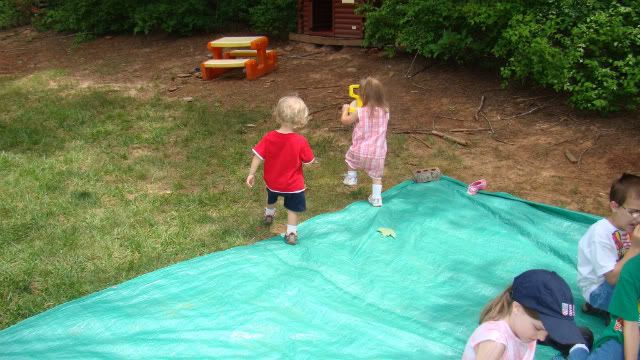
One of the facts we shared was that grasshoppers are able to jump up to 20 times their height! Isn't that amazing? We measured how tall each of the children are and then mulitplied that by 20. We had them measure out how far they could jump if they were able to jump like a grasshopper. Needless to say - they didn't even come close!
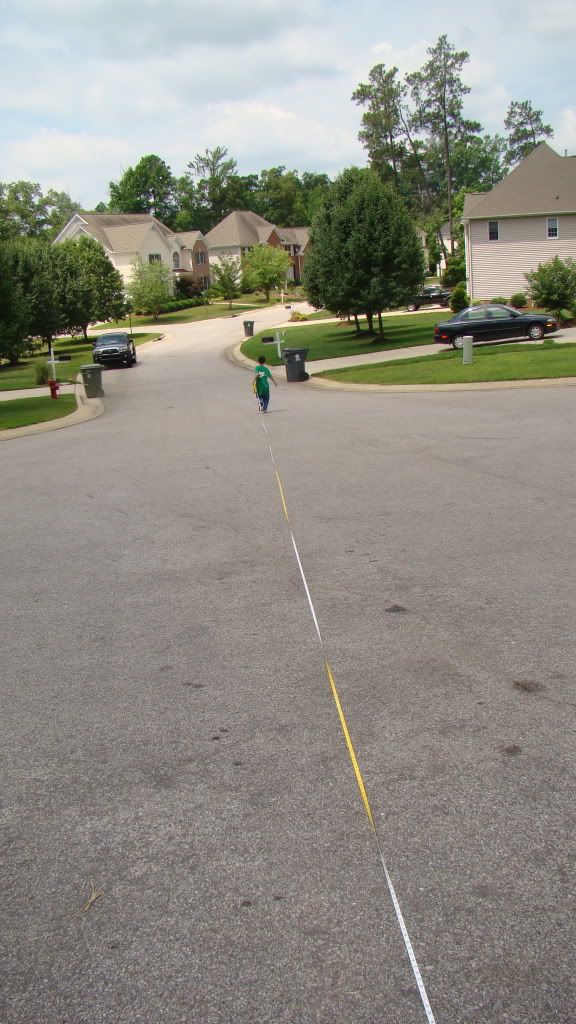
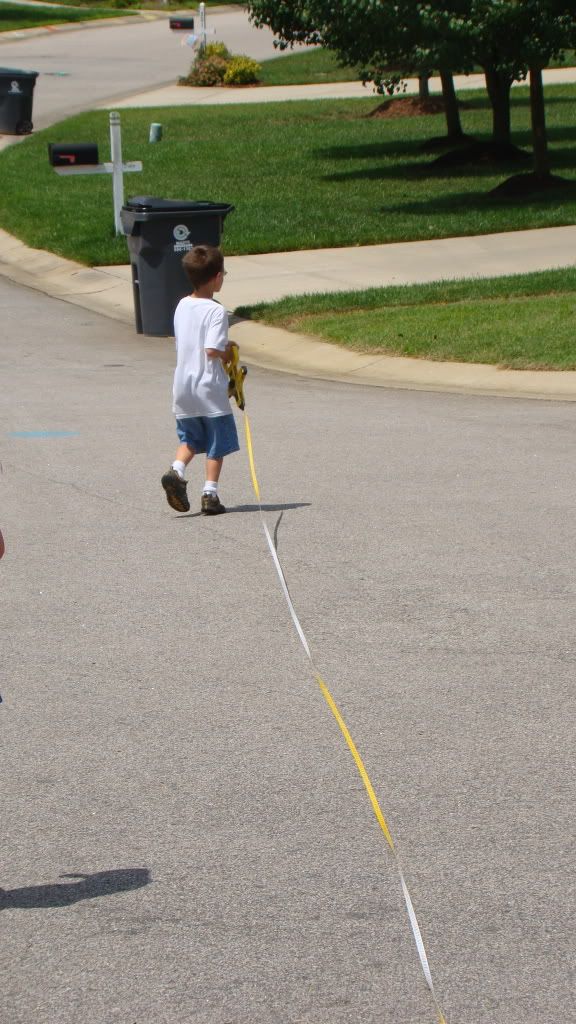

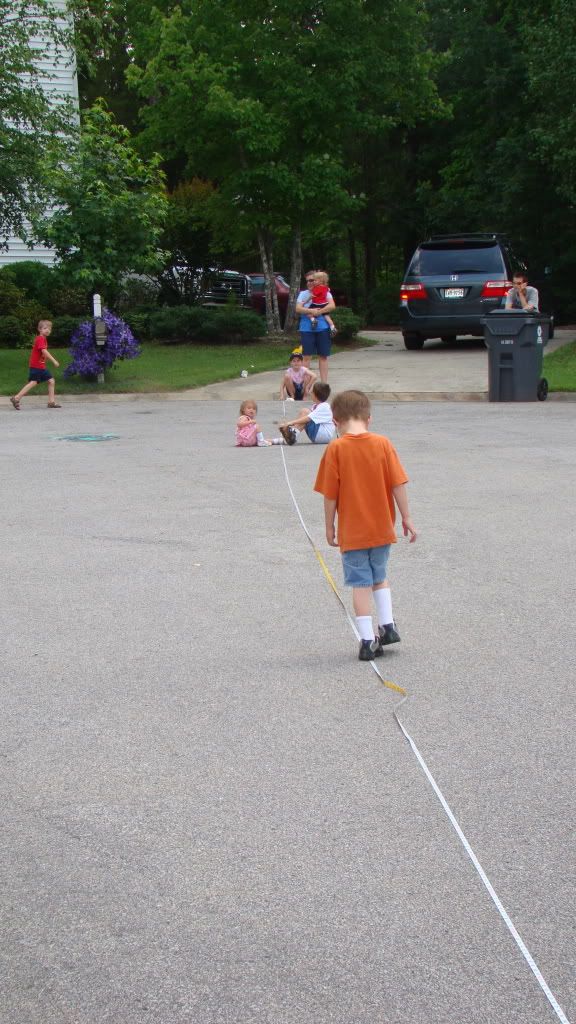
We made homemade catapaults for the next activity. It was very easy and a lot of fun. Try it! I used a 2 inch block (or the closest square I had to it). Tape a ruler to the bottom of the block. Tape a spoon to the top. That's it!
We talked about how the strong muscles in the legs of the grasshopper are what is enables him to catapault great distances. We used m&ms to illustrate the point. Each child got a different color so they could compare which went the furthest.


Even the little boys liked the catapault, though I think they liked the chocolate even better.
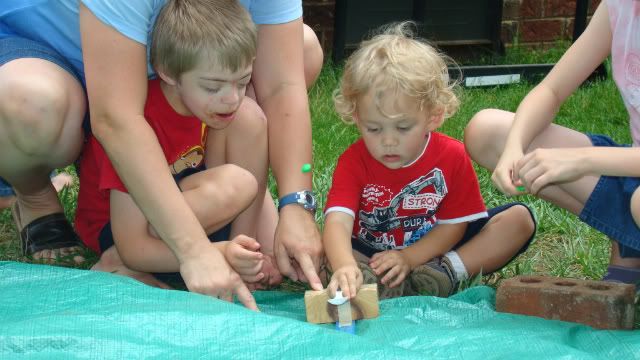
For snack, we went easy today - grasshopper cookies. The children wondered what these had to do with grasshoppers. Nothing really, but they did taste good.
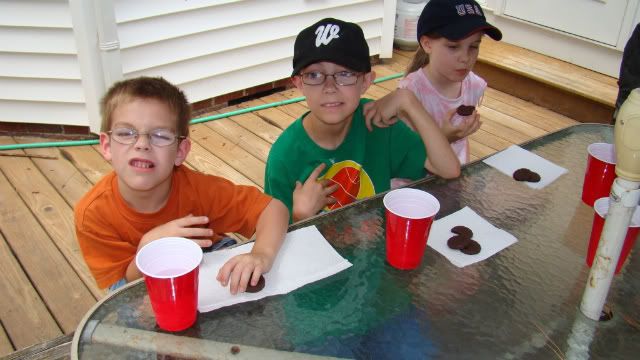
We ended a little early because we wanted to get to lunch early. We knew we would be eating an early dinner (so that the girls in the play could eat before having to be back at the church at 5:30).
After lunch, some of the children spent time drawing insects from a really neat book I found at a local store.
A site to listen to sounds of a grasshopper - http://www.naturesongs.com/insects.html
Here are a few more more interesting Facts about grasshoppers
**When a grasshopper is picked up, they "spit" a brown liquid which is known by most kids and adults as "tobacco juice". Some scientists believe that this liquid may protect grasshoppers from attacks by insects such as ants.
**A more attractive feature of some grasshoppers is their ability to sing. It's the males that sing, and they do it to attract female mates, or to warn off other males.
**Q. How many eyes does a grasshopper have? Where are they placed?
A. The grasshopper has five eyes. It has 2 very large eyes on the side of their head with thousands of tiny lenses that enable them to see forward to the side and behind them. They also has a small eye on each of its antennas. And one more eye between them.
**Q. What kind of crops can a grasshopper destroy?
A. They will destroy an entire crop of alfalfa, clover, cotton, corn, and other grains causing millions of dollars in damage every year.
*Grasshoppers can’t drink. They take in water from the plants they eat.
*The differential grasshopper, which lives throughout North America, can eat 16 times its weight in food in a day.
*Millions even billions of grasshoppers have flown together in a single swarm so thick it blocked out the sunlight.
* The world’s largest grasshoppers are about 150 mm long, while the smallest measure less than 6 mm.
* A female grasshopper can dig a burrow using tiny hooks at her rear end. Then she lays 20 to 100 eggs in the burrow.
One of the benefits to me of doing this type of camp is that I gain a greater appreciation for all that God has done - the variety, the creativitiy - it's really amazing. So many interesting things for us to learn about - and what fun it is to learn!
Blessings
Leslie














Wonderful day! I came over here when searching for your workboxes post and I love your creativity!
ReplyDeleteVal
http://rosegardenhomeschool.blogspot.com/
I really enjoyed catching up pn your camp. What great ideas you have. I hope you have a great week.
ReplyDeleteBlessings,
Dawn
I popped over here to look at workboxes and as I'm looking at your pics I see some familiar faces! :) I met you at the Easter Egg hunt this last year and we just had homegroup last night at Catherine's house. So funny I've visited your blog before and never put the two together! :)
ReplyDeleteJolanthe
http://homeschoolcreations.blogspot.com